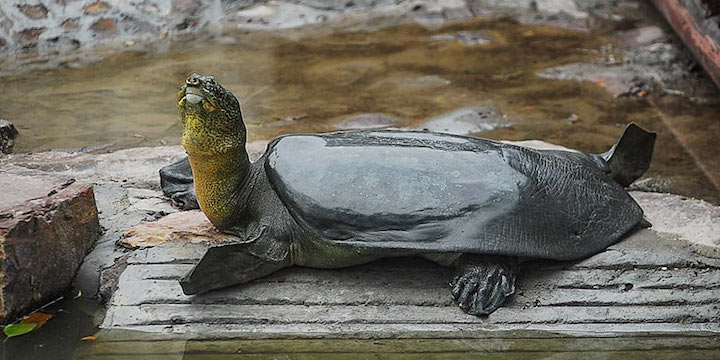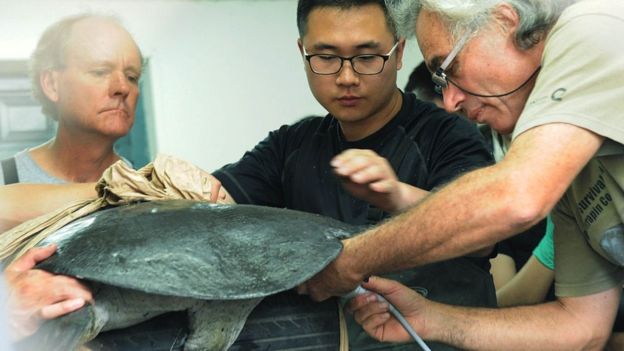This turtle has long been considered one of Earth’s rarest species of any animal with only 4 known living members recently recorded. On April 13, that count went down one member as a female Yangtze turtle died at China’s Suzhou Zoo.
Photo courtesy of the BBC
The 90-year old female turtle died 24 hours after an attempt at artificial insemination. However, because there were no complications from the operation and the procedure had been attempted previously with no consequences, an investigation into the death will be necessary. A team made up of experts from the Suzhou Zoo, the Wildlife Conservation Society (WCS), and the Turtle Survival Alliance (TSA) are working together to determine the cause of death.
(LOOK: This Panda Daycare is the cutest thing you’ll see today)
The WCS released a statement on the death, saying:
The male and female turtles, which have failed to produce offspring naturally since they were brought together in 2008, were determined to be healthy for the procedure. Sadly, this time the female turtle did not recover normally as she had in the past and she died despite 24 hours of nonstop emergency care.
She leaves behind her mate, a male turtle over 100 years old, in the care of the Suzhou Zoo. Despite a decade worth of efforts to continue the Yangtze giant softshell species, all proved futile. While a pair of turtles continue to live in the wild in Vietnam, their genders have remained unverified due to their elusive nature.
Photo courtesy of the BBC
(These adorable cheetahs are so shy that they have ‘emotional support dogs’)
Should this 90-year old turtle be the last female of the Yangtze giant softshell species, they could soon be considered functionally extinct. The species arrived at this point after suffering the harms of hunting, overfishing, and destruction of their habitats at human hands.
What do you think we can do to improve conservation efforts?






